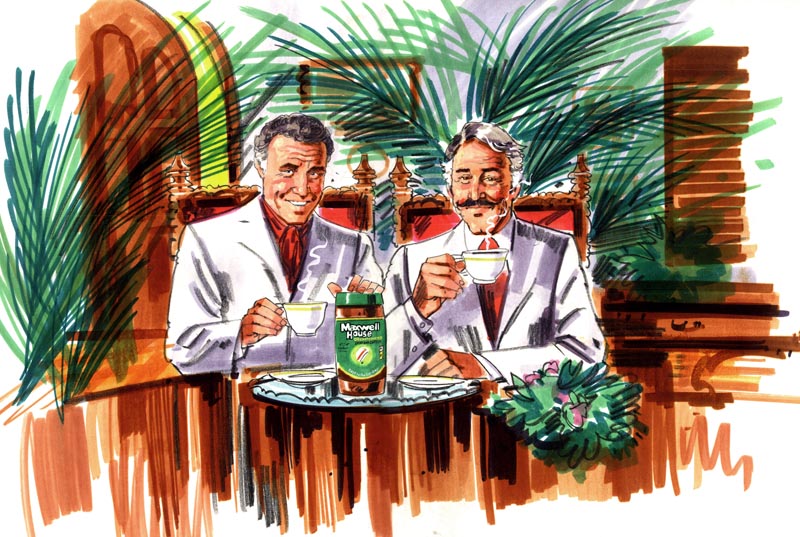"I just learned so much from Will and some of the others there... the atmosphere... it was just so creative... the development, the transformation of my work was just overnight. I couldn't believe it myself."
As the youngest artist in the room, and having not yet established many contacts, Stewart was grateful just to be in the presence of these others. To help him out the older established artists would send storyboard work his way.

"They used to give me some storyboards," explains Stewart, "because they felt sorry for me... because I wasn't making any money." He chuckles, "I just came in and parked myself in the corner and did samples."
"I guess I'm kind of a commercial artist," he says with an almost apologetic laugh. "They came in with storyboards for me to do and I did 'em! In otherwords, I didn't have any problem doing them for the price they were willing to pay. I viewed it as work - and actually, its good for you because boy, you sure learn how to work fast and how to draw."

Initially, though markers were around, Stewart used chalk pastels. Over time, as he did more and more comps and layouts, he switched to markers. These examples, which Stewart did for an animatic, were done mostly in marker with some gouache paint and black chalk pastel. At roughly 18" x 24", they are absolutely some of the biggest marker renderings I've ever seen - and must have been a tremendous amount of work.
About this project, Stewart recalls that "Lorna Lampert ( the art director on the project shown here) used to call me in a lot because she liked the way I did portraits. And she felt that they looked the way they were supposed to look and that would help sell the concept to the client." Earlier in his career, to aid him in the accuracy of his drawings, Stewart says he first had to learn how to use the 'Lucie' (Lucigraph). During his early days at the Toronto art studio TDF, "the salesmen would come in with a project and say, "we need this back in an hour."
"I had never known how to use the Lucie before," he continues, "and how to find the shortcuts... and it was tough! Because I had learned how to draw and paint - but I didn't know how to work under pressure. And you know, with getting likenesses, its crazy to just sit there and just try and draw the thing."
"But," he says with some qualification, "I think the secret to the Lucie is that you do need to know how to draw. You still need to know how to break the thing down and make it work."

Drawing well and being fast are the two most important qualities a storyboard artist must possess. "It requires a special kind of skill that not too many people have," he wisely points out. "I did a lot of other things in the way of finished art, but I found with storyboards, very few guys could do it."
"I used to watch guys around me who'd be thinking, 'Oh, this is easy,' but then they'd end up doing these wooden-type of figures. Half the battle is to capture a certain kind of feeling in the drawing. Its not just a matter of putting a figure here or there... your drawing has to actually look like you know what you're doing."

"The drawing has to sing a little bit, you know, the drawing, the line and the feeling of it... and if you can capture that in marker or pen or chalk, it doesn't have to be modelled up that much. So long as it captures a moment in time."
Most illustrators are too rigid - they can't get into that."

I ask him when he stopped doing storyboards and he says it was some time in the 1980's. "The biggest thing with storyboards is the deadline pressure," says Stewart. "Often you would end up working nights on them. I did a lot of storyboards because I guess I was a little more money-oriented then," he chuckles. "Later on I wanted to focus more and more on finished art so I guess I kind of sacrificed on that."

"You know," he says thoughtfully, "it really wasn't my favourite kind of thing to do... but I was always proud of the stuff I did. And I enjoyed it, too. Its a special art."
* At some time in the near future, I hope to bring you an entire week devoted to exploring Stewart Sherwood's career.
* Stewart Sherwood's website
No comments:
Post a Comment